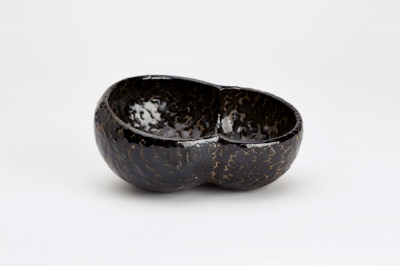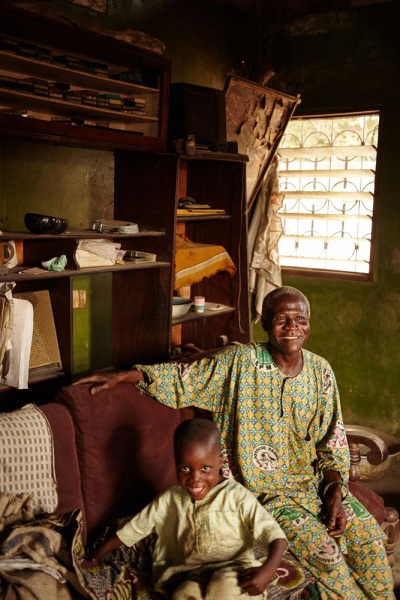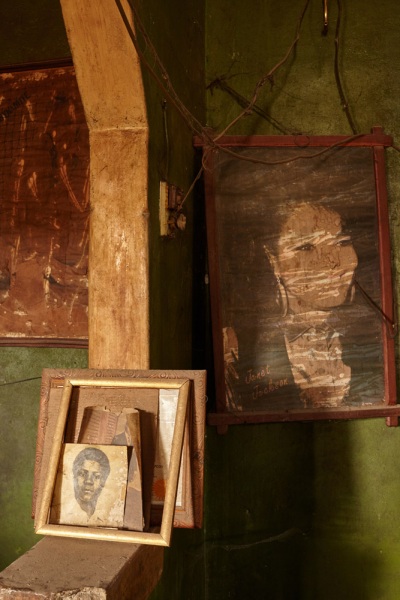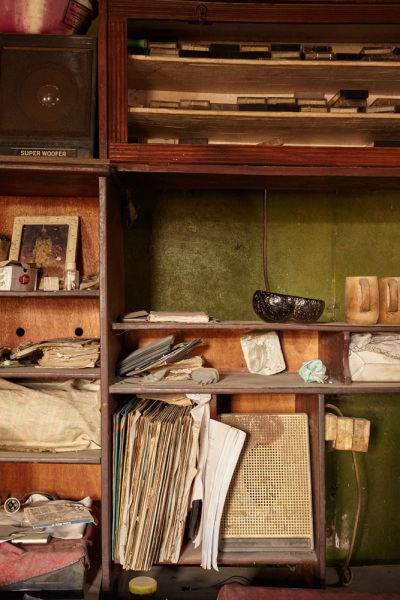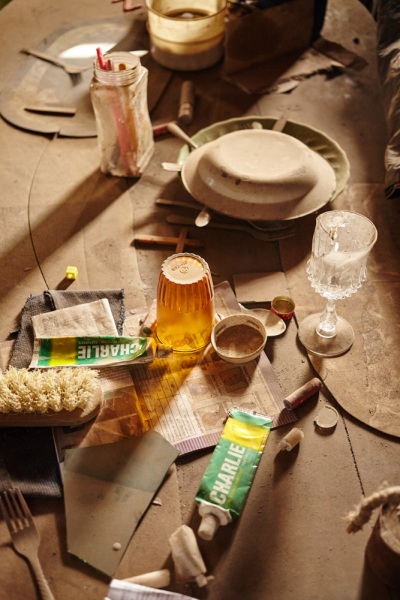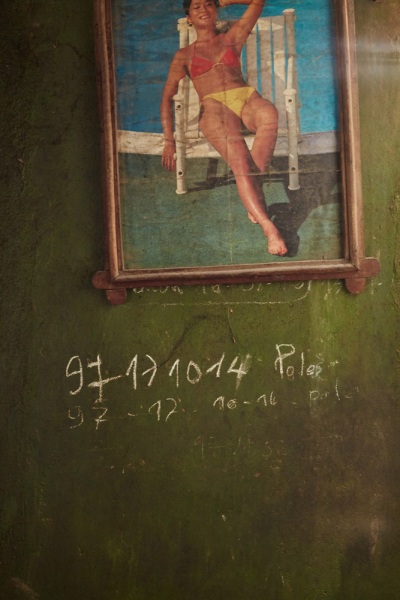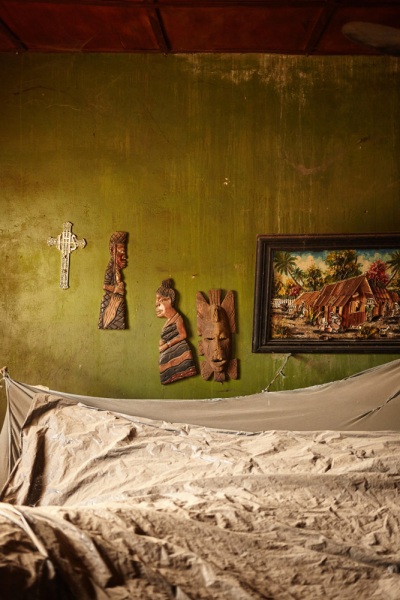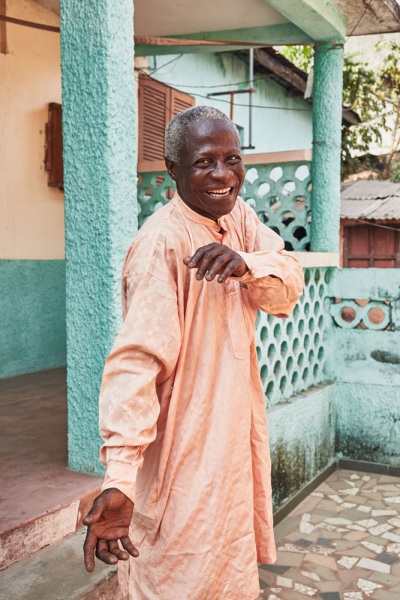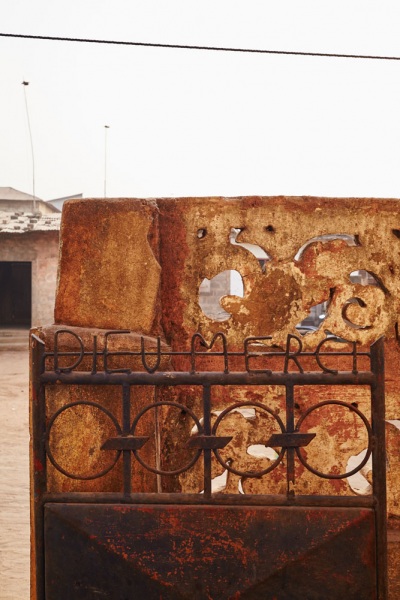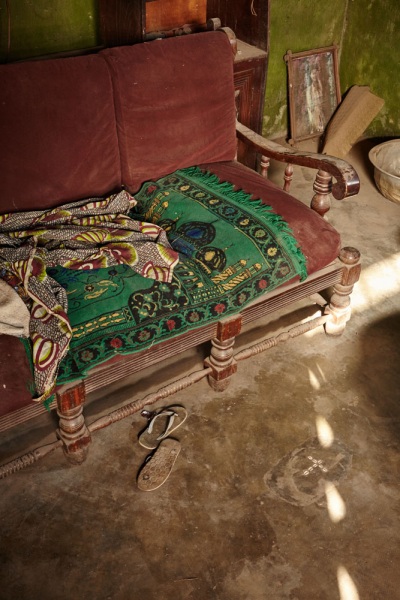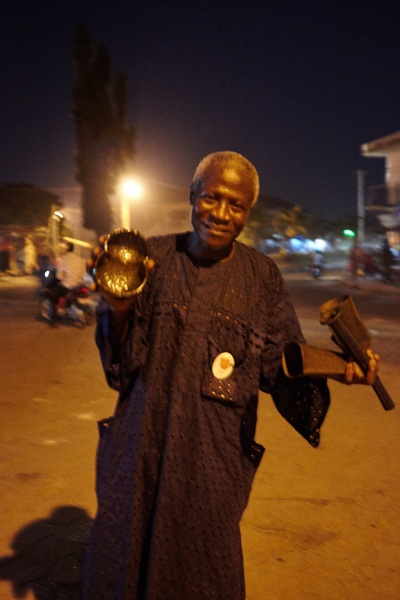porto novo/kashkul/kashkul
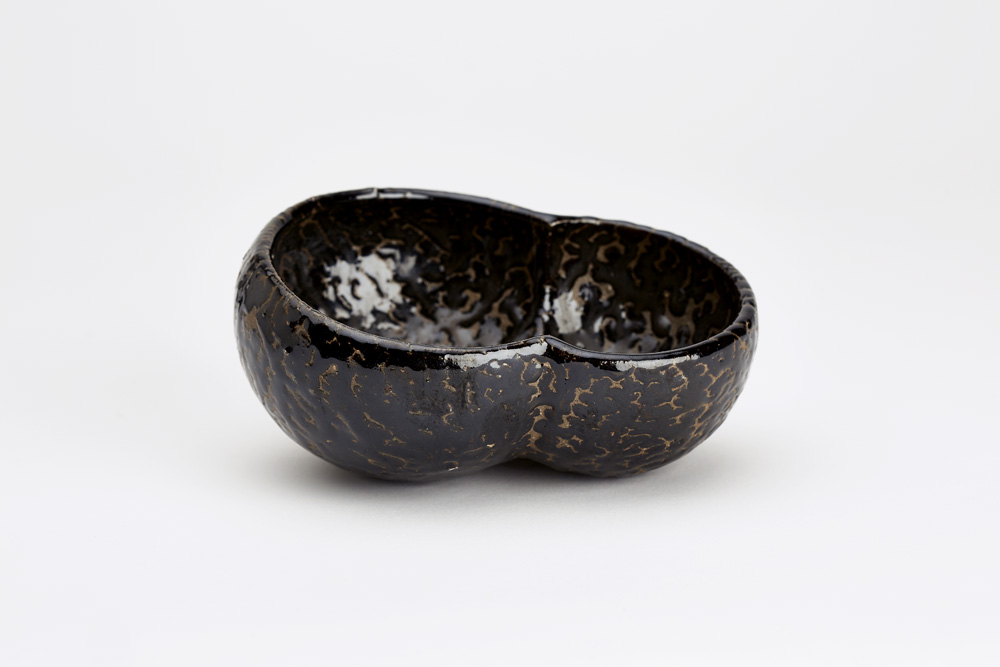
when you are selling new merchandise in a market in benin,
you don´t need a sign-board or an advert in a local newspaper,
you need a gongoneur.
the gongoneur is a market crier with cowbells, a profession that is very much alive even today. two days before the intended pop-up shop we hired such a man and he turned out to be an indispensable and exhilarating part of the project, as well as a customer and friend.
on the night we met him, he was given the choice of the gold plate and the kashkul to take on his rounds in the market quarter to promote our event. unhesitantly he selected the begging bowl and proceeded to sound his bells, accompanied by an awe-inspiring voice that strikingly told of the strange bargains to come.
on the day of the sale he was in and out of the market stall, touting the wares and munching cake from his bowl. when we visited him at home for the photo shoot, he produced the pot from several layers of plastic bags, saying to himself:
"I have to guard this well!"
I am certain that his house inspired the original idea for the mockingbird lane mansion in the munsters tv series. enough said.
behind it stands an immense avocado tree.
it grows in the neighbor´s garden, but the fruit is said to taste like butter.
our friend could however not be easily found at home, stating too much domestic stress as the reason. he preferred to hold his naps in the nearby church
two hemispherical bowls have been joined to make this vessel.
it has been fired in the japanese hikidashi guro technique,
where the pot is pulled from the kiln with tongs at 1220°C.
at this point of the firing the clay and glaze are soft and translucent from the heat.
upon being pulled out, the shape cools to room temperature within a few minutes.
the clay is a dark czech stoneware and the glaze is made from only iron ore and wood ash.
a kashkul is a begging bowl used by dervishes and fakirs devoted to sufi mysticism.
I still have the one given to me by my sheikh.
he told me that real kashkuls are made from the nut of the coco de mer palm tree,
which grows only on two islands of the seychelles. it is the largest seed of any plant
and its peculiar shape inspired this ceramic interpretation of the alms bowl.
the currents of the indian ocean sometimes carry coco de mer nuts to the arabian
peninsula and the shores of sindh, where magical powers were attributed to them
in the past because of their rarity and obscure origin
